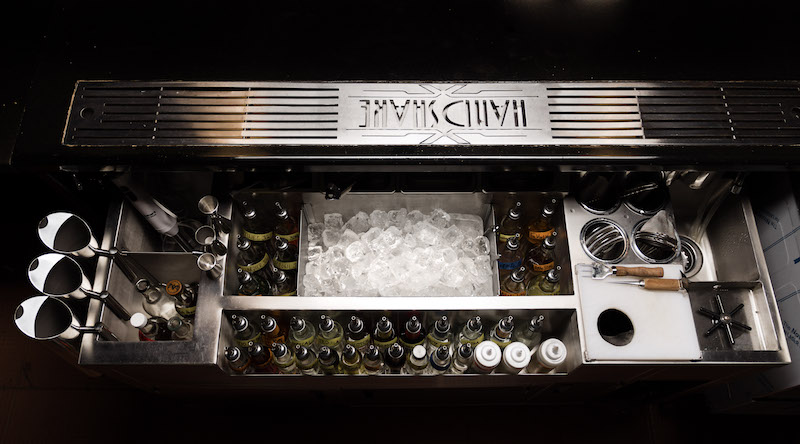The Mexican bar culture intertwines diverse concepts, creating an unforgettable experience for anyone. The famous saying “mi casa es tu casa” takes on a whole new dimension in Mexican ventures.
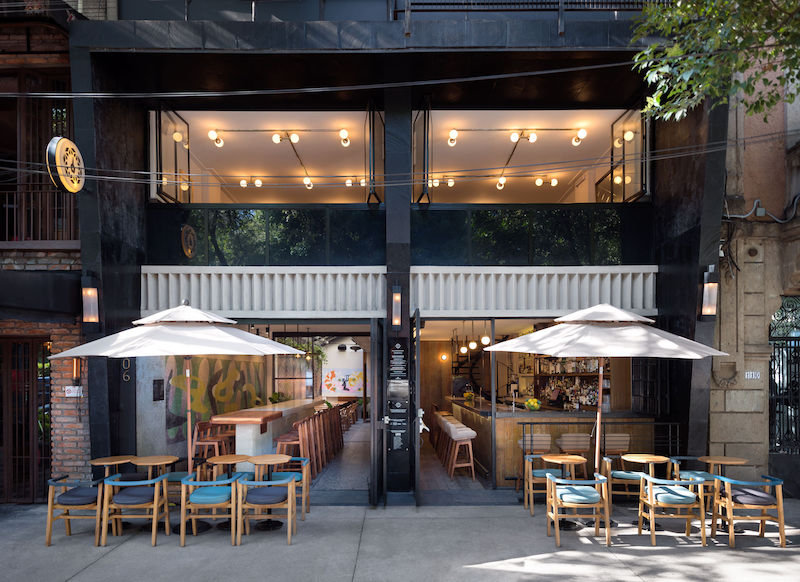
Limantour
A decade ago, Licorería Limantour emerged, swiftly becoming an institution in Mexico City’s vibrant nightlife. Considered one of the city’s best party bars, it exudes electric vibes while fostering a unique intimacy, catering to those seeking a peaceful spot for a drink. Led by industry legend Benjamin Padrón and bar manager José Luis León, the bar introduced a twist on the classic Margarita, the Margarita al Pastor, with a blend of taco seasoning and a hint of coriander salt. This concoction became one of the most sought-after drinks by Mexico City enthusiasts worldwide. Limantour’s current menu, Confabulario, has caught the world’s attention. Despite their serious approach to cocktail craftsmanship, their drinks are vibrant, crafted in harmony with the bar’s atmosphere. Its elegant décor, divided into two levels, welcomes a bustling nightly bar scene, managed seamlessly due to exceptional service speed and flawless Mexican hospitality. In 2021, Licorería Limantour was crowned the best bar in North America.
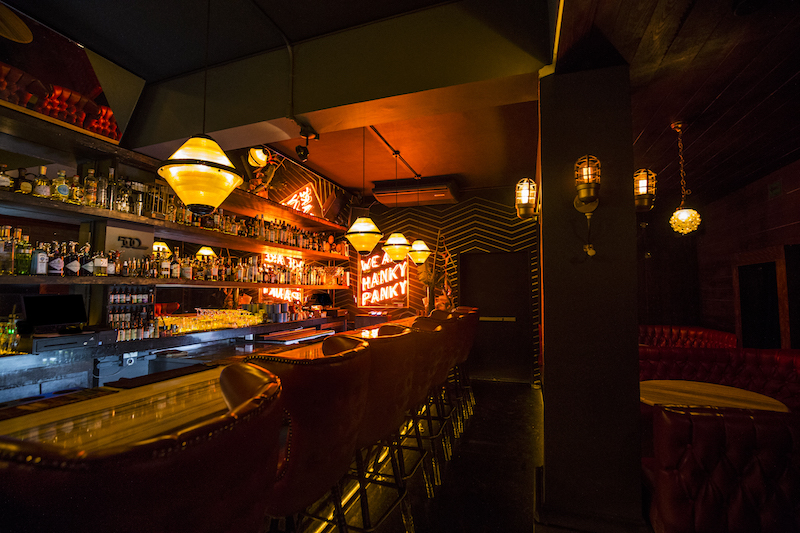
Hanky Panky
Named after the famous cocktail crafted by Ada Coleman at London’s renowned Savoy Hotel in the early 20th century, Hanky Panky remains a speakeasy gem. The only way to enter this sultry speakeasy with subdued lighting, a lengthy marble bar, and red leather seating is by making reservations through their website or social media, after which you receive the actual address and entry instructions. Behind the bar, lead bartenders Gina Barbachano and Ismael Martínez, with their team, craft modern twists on classics and original recipes, placing Hanky Panky in the spotlight since its inception. Their current menu, Passport, draws inspiration from journeys to other bars and the array of bartenders hosted, fostering a cultural exchange that reflects in their offerings.

Proyecto Nebulosa
Nestled in the midst of a subtropical forest in San Sebastián del Oeste, Jalisco, lies the Proyecto Nebulosa bar. The establishment showcases high-quality Mexican brands that produce products with reverence for the planet, the land, culture, and the lives of local residents. With a commitment to the Sierra Madre Occidental heritage, they blend tradition, research, sustainability, fair economics for local producers, social engagement, regional promotion, quality, transformation, and innovation. This fusion transcends into beer and spirits production but is most vividly experienced in the gastronomic journey offered by Project Nebula’s three sections—Nebulosa Garden, Nebulosa Beer & Ninfa Raicilla. Project Nebulosa Garden, situated amid the surrounding hills, experiments with local flavors. Each dish and beverage reflects the changing seasons, allowing visitors to experience all the yearly cycles, granting a unique life to the gastronomy within this concept. Ingredients sourced from the western Sierra Madre region contribute to a distinctive menu. The culinary concept follows the Slow Food movement’s philosophy.
The second part of Proyecto Nebulosa specializes in crafting artisanal beer that complements and enriches the bar’s offerings. Whether basic malts or special ones, they always incorporate regional ingredients, rendering each beer unique. The final piece of the Proyecto Nebulosa puzzle is Ninfa Raicilla, tracing its roots to a nearly four-century tradition. The production of raicilla, considered the most aromatic spirit with floral notes, occurs on the eighth kilometer towards Potrero de Mulas in Hacienda las Tres Carmelitas. Local raw materials result in a distinct flavor. Handcrafted bottles, made from recycled blown glass, contain the spirits, adding to their uniqueness.

Brujas
This esteemed cocktail bar, boasting an all-female staff, takes its name from the building it occupies – Casa de las Brujas (House of the Witches). Brujas embodies a hub of creativity with cocktails rich in Mexican herbs. The building, erected in 1908, ranks among the top five most intriguing structures in Mexico City, according to several accolades. Its rooftop resembles a witch’s hat, windows resembling eyes, sparking local legends about a shaman named Pachita, who once inhabited the house and was frequented by celebrities and politicians. Today, it’s a different elixir altogether, drawing cocktail connoisseurs worldwide to this legendary bar located within this unique building.
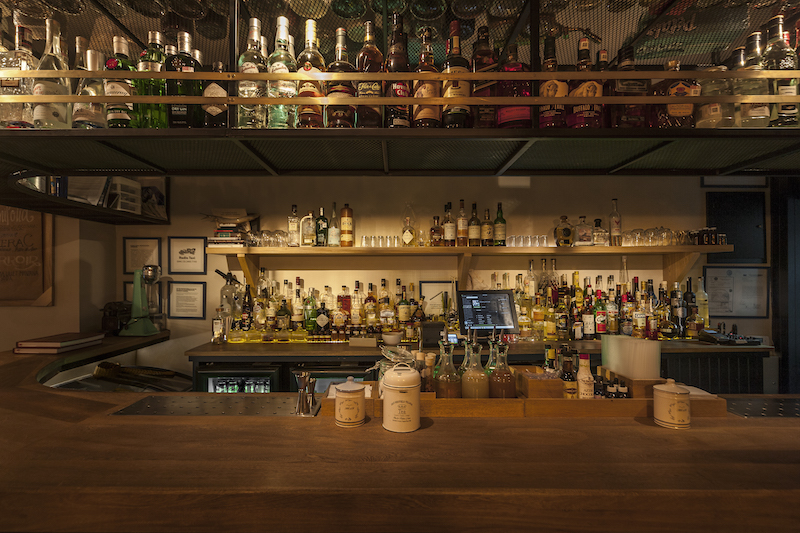
Though this cozy and intimate bar in Colonia Condesa, Mexico City, has been open for several years, each visit brings something new. The relaxed and well-functioning atmosphere arises from a mix of regulars, new visitors, and foreigners who daily enjoy their drinks here. Likely, this is due to the acclaimed staff led by José Luis León, also known from Licorería Limantour, constantly innovating the menu and giving patrons fresh reasons to return. The latest menu includes creations like Hipocampo, featuring tequila infused with nori seaweed, dill cordial, lime, and soda. It makes sense that the bar is named after one of the islands visited by Charles Darwin during his travels through the Galapagos archipelago – where, much like in this bar, evolution is an ongoing process.
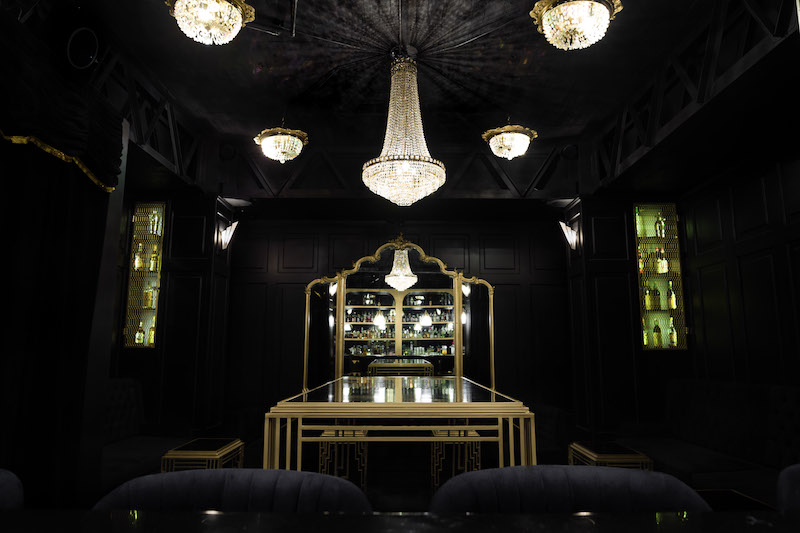
For anyone stepping into this establishment, it’s likely to be love at first sight. This stunning bar in Colonia Juárez, Mexico City, boasts an art deco style with breathtaking copper details, evoking the enchanting atmosphere of the prohibition era. But what makes this bar exceptional is what happens behind the bar. Staff, under the guidance of renowned Dutch bartender Eric Van Beek, chose the path of sophisticated yet fun drinks. As evidence, the Mexi-Thai drink made from tequila, lime, coconut, and complemented with basil oil drops showcases that Handshake’s menu adheres to three fundamental pillars: taste, aesthetics, and innovation. Spirits aficionados will revel in delving into the impressive bar collection of historic bottles found by the bar owners during their years spent in the UK, Italy, or the USA. With treasures like a 50-year-old whisky or a 70-year-old amaro, a plethora of new possibilities emerges.
